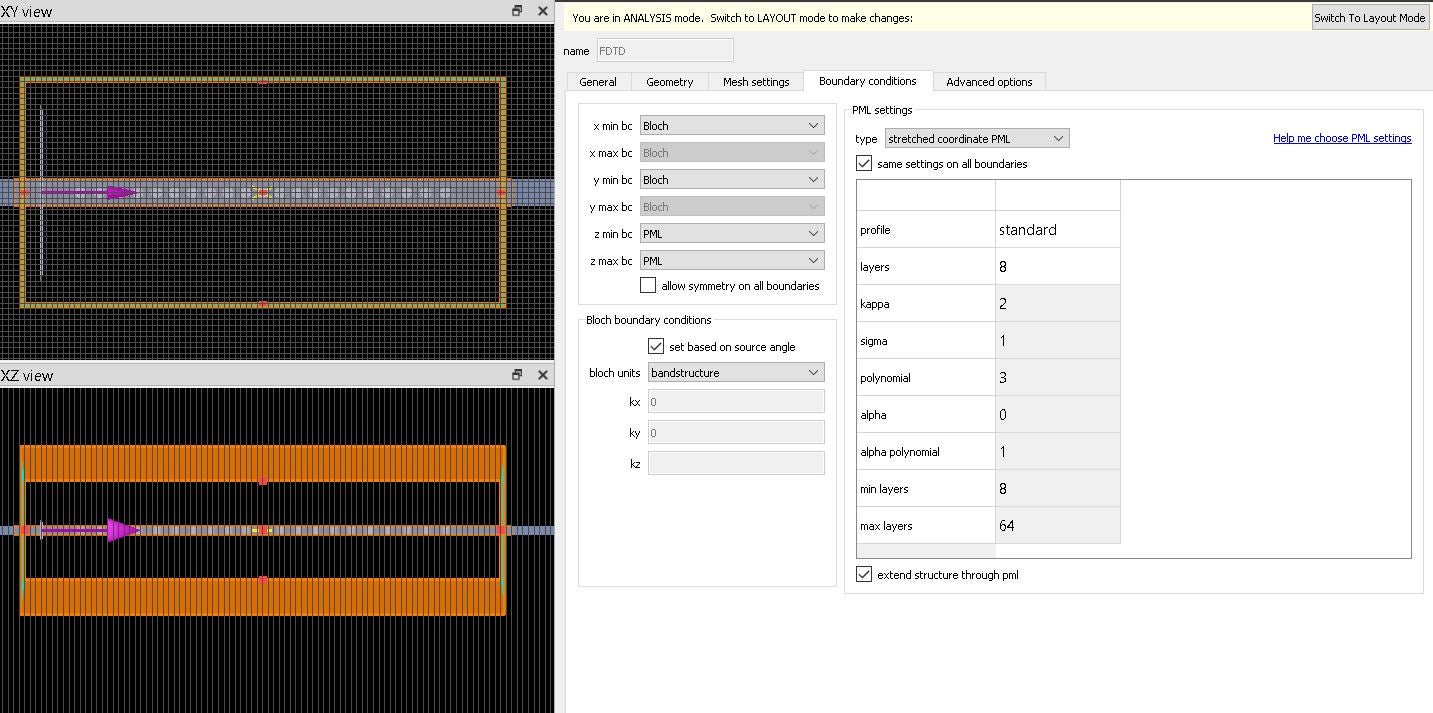-
-
May 8, 2021 at 8:15 pm
skvarshney
SubscriberHi,
I am trying to simulate a one dimensional photonic crystal cavity with FDTD boundary conditions as below:
May 11, 2021 at 4:52 pmTaylor Robertson
Ansys EmployeeHello Svarshney Please refer to this page , https://support.lumerical.com/hc/en-us/articles/360041611774-Quality-factor-calculations-for-a-resonant-cavity, for a discussion on how to calculate the q factor. In short the only way to reduce auto-shutoff is to allow the simulation to run longer. Using the high q analysis group; however, you should be able to get the Q factor so this is correct. This is a pretty sensitive parameter, and so an order of magnitude calculation seems pretty reasonable.
I would consider using PML on all boundary conditions, as this will more accurately consider the Q of an isolated cavity. Currently, with Bloch you are looking at the Q factor of an infinite array of cavities. This will provide more loos channels and have the simulation run faster. You may want to move the BC further away from the cavity.
BestViewing 1 reply thread- The topic ‘Autoshutoff level’ is closed to new replies.
Ansys Innovation SpaceTrending discussionsTop Contributors-
3632
-
1313
-
1142
-
1068
-
1008
Top Rated Tags© 2025 Copyright ANSYS, Inc. All rights reserved.
Ansys does not support the usage of unauthorized Ansys software. Please visit www.ansys.com to obtain an official distribution.
-
The Ansys Learning Forum is a public forum. You are prohibited from providing (i) information that is confidential to You, your employer, or any third party, (ii) Personal Data or individually identifiable health information, (iii) any information that is U.S. Government Classified, Controlled Unclassified Information, International Traffic in Arms Regulators (ITAR) or Export Administration Regulators (EAR) controlled or otherwise have been determined by the United States Government or by a foreign government to require protection against unauthorized disclosure for reasons of national security, or (iv) topics or information restricted by the People's Republic of China data protection and privacy laws.












